PROTECT YOUR DNA WITH QUANTUM TECHNOLOGY
Orgo-Life the new way to the future Advertising by Adpathway‘Limelight’ hydrangeas are an incredibly popular and adaptable variety. They produce large, long-lasting blooms and are far more flexible than most hydrangeas when it comes to their environment. They’re so easy to grow!
When it comes to the conditions for this pretty shrub, you have a much wider range that it will tolerate. Most hydrangeas are sensitive to direct sun and need acidic soil to thrive. ‘Limelight’ handles sun exposure exceptionally well and adapts well to a variety of soil conditions.
‘Limelight’ is a large shrub, growing to between six and eight feet at maturity. The foliage is large, soft, and lush, and the flowers are, too! The large bloom clusters start out a vibrant lime green, then mellow to a creamy white. They are even capable of blushing as the summer wears on, taking on pink and rose tones.
If you have one of these shrubs, you may be looking for a companion that will accentuate and complement it. The best ‘Limelight’ hydrangea companions will be those that thrive in similar conditions. Given the flexibility of this cultivar, that’s easier than with most hydrangeas. Let’s take a look at some beautiful companion options.

Purple Coneflower Echinacea

Purple Coneflower Echinacea Seeds

Purple Fountain Grass
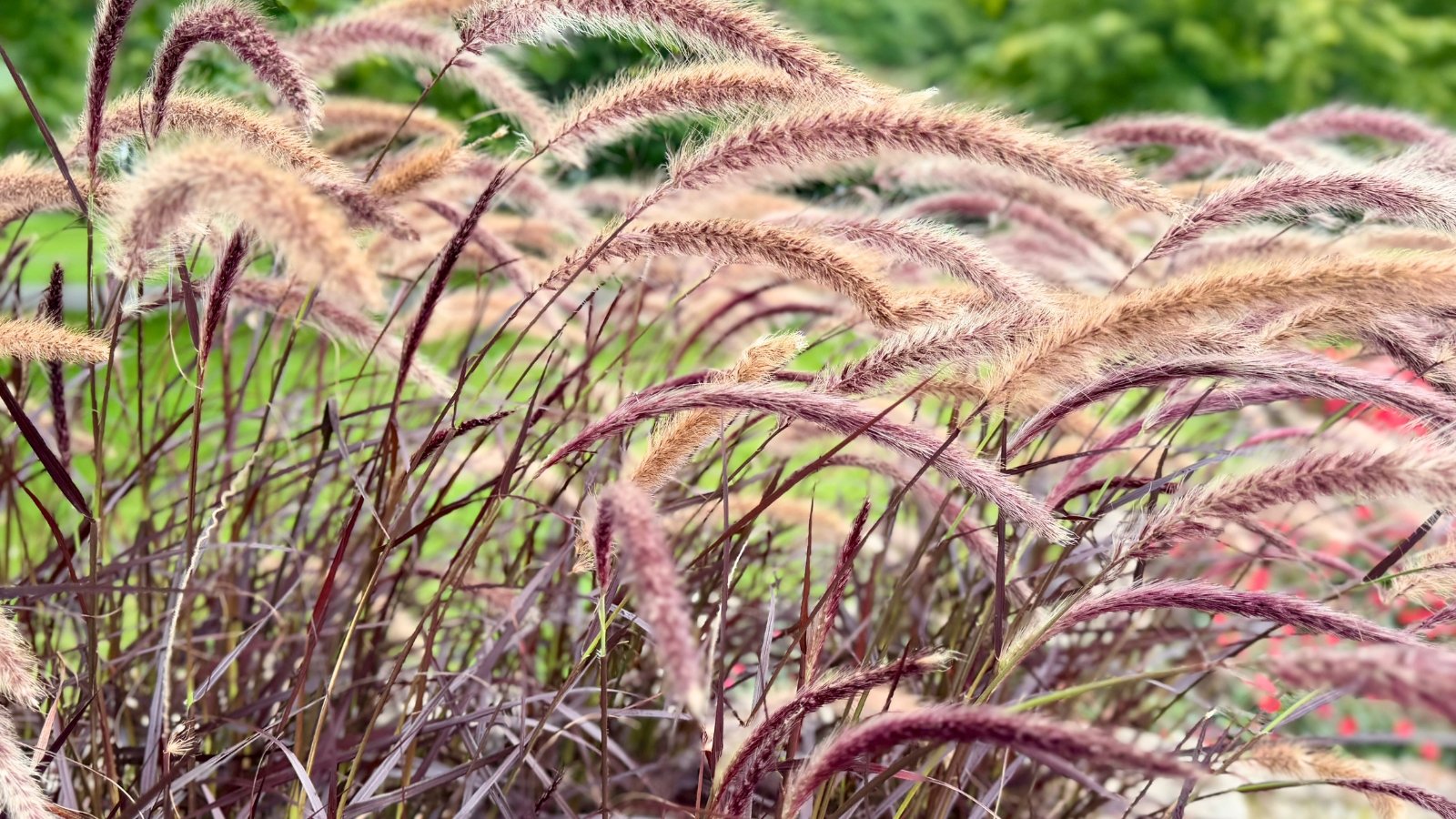 Dramatic plumes catch the light at golden hour.
Dramatic plumes catch the light at golden hour.If you plant your ‘Limelight’ hydrangea in full sun, purple fountain grass makes an excellent companion. It’s only perennial in warm climates, but it’s a vigorous annual elsewhere. Its bold foliage and dramatic plumes are a wonderful textural juxtaposition for plump and rounded hydrangeas.
Purple fountain grass likes full sun and well-drained soil. It prefers a moderate amount of moisture, so it can tolerate what ‘Limelight’ needs, as long as the soil drains properly. Purple and green pair nicely, and these two complement each other with a balance of texture and seasonality.
Coral Bells
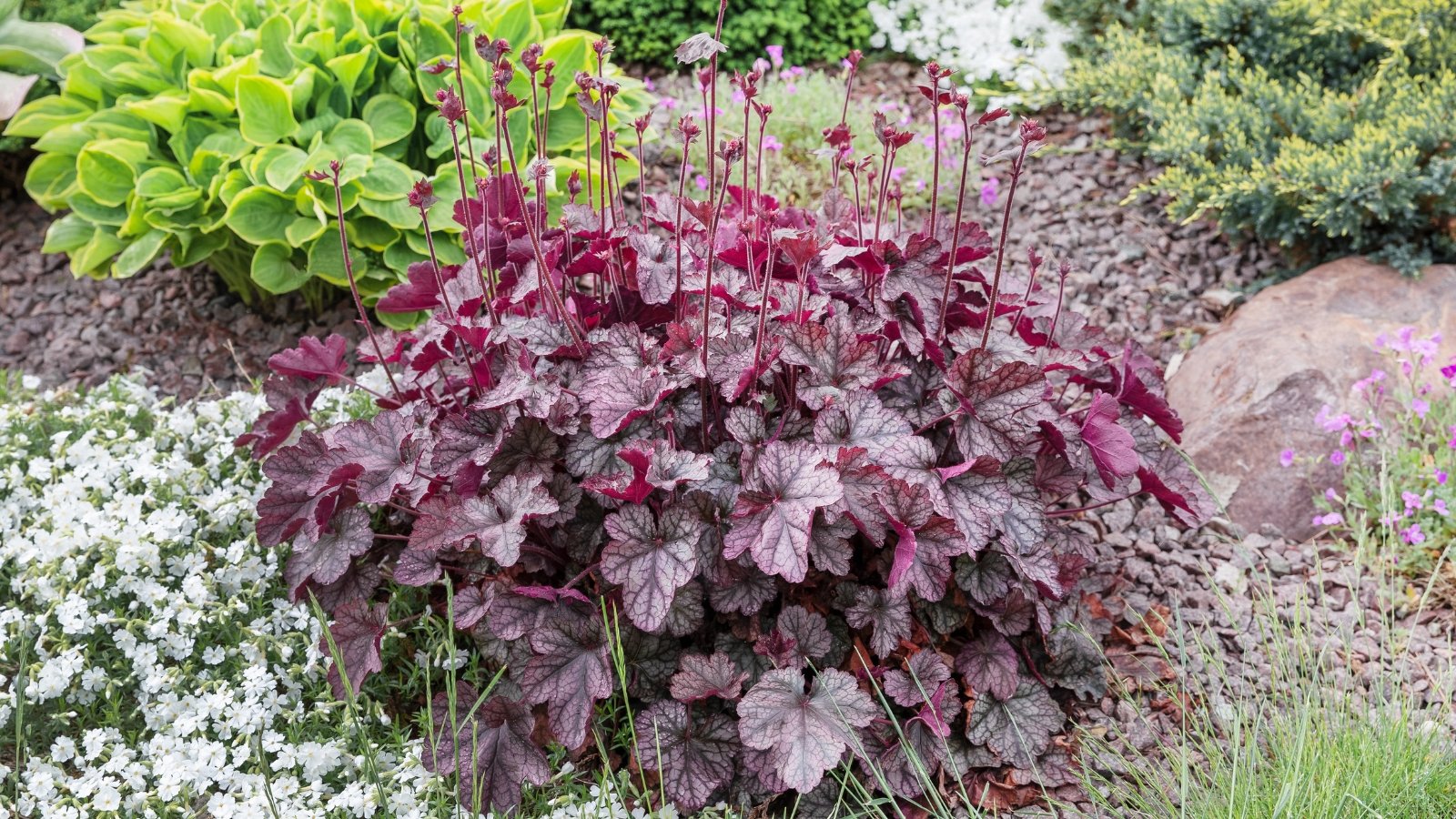 Shady spots make these plants truly thrive.
Shady spots make these plants truly thrive.Coral bells make a wonderful companion for your ‘Limelight’ hydrangea. These prefer some shade and are low-growing, so they perform well planted around the base of your larger shrub. They’re both flexible about soil, and both need consistent watering in the summer.
Your hydrangea makes an excellent anchor, and coral bells will happily create a carpet at its feet. Choose a dark-leaved cultivar for drama, or amber and gold tones to bring warmth to the combination. In the South, choose a hybrid that’s happy in humid climates. This layered combination is simply divine!
Astilbe
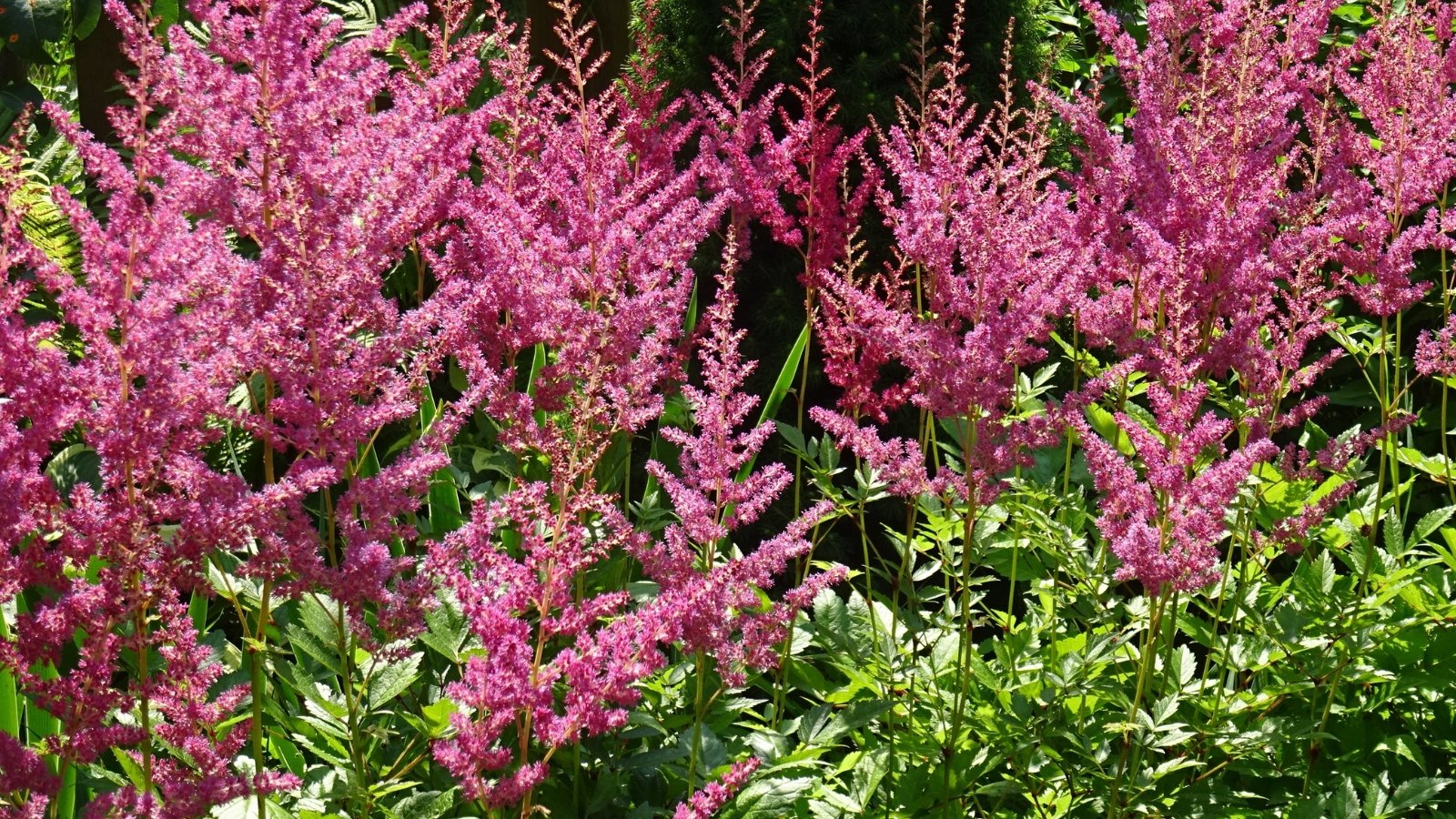 Feathery plumes create softness around bold shrubs.
Feathery plumes create softness around bold shrubs.This elegant pairing creates a layered and texturally rich companionship where the two complement each other beautifully. Astilbe makes an ideal companion for a ‘Limelight’ hydrangea planted in partially shaded spaces. Its feathery plumes contrast wonderfully with the hydrangea’s bold, heavy flower heads.
Astilbe blooms in early summer, and will overlap with your hydrangea, which begins to bloom in mid-summer. The two will overlap and create a lovely transition of colors. Astilbe is feathery and light, and will form an incredible skirt around or to the sides of your shrub.
Anise Hyssop
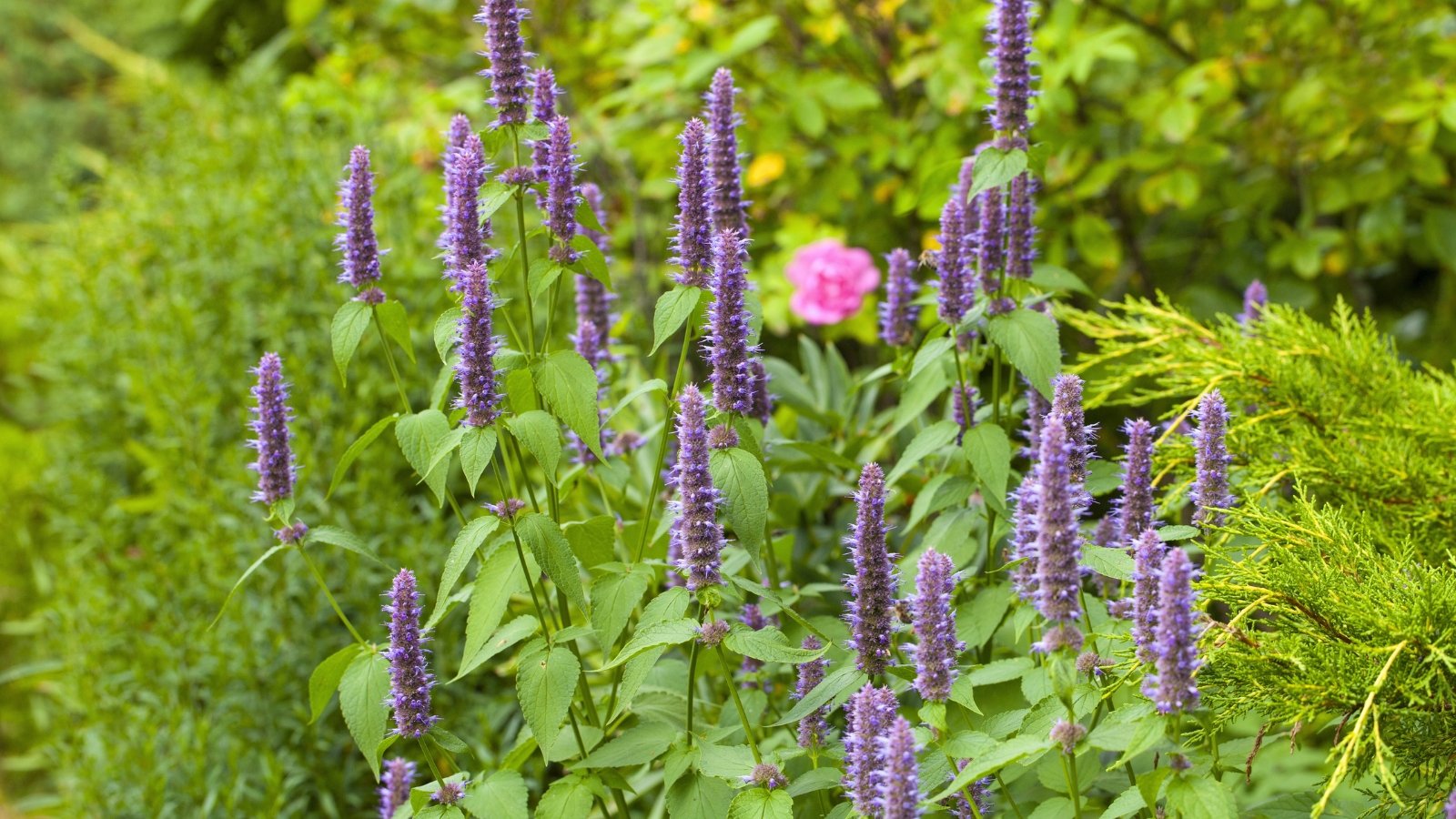 Blue blooms dance nicely beside bright, green leaves.
Blue blooms dance nicely beside bright, green leaves.Anise hyssop makes an incredible companion for ‘Limelight’ hydrangea! They complement each other excellently. The cool blue of anise hyssop’s flowers alongside the sassy lime green of your hydrangea will set each other off. When ‘Limelight’ blushes near the end of summer, it’s even more wonderful.
‘Limelight’ has a more manicured look, which is softened by anise hyssop, which has a wildflower vibe. These two companions peak together at the end of the summer. They are a pollinator powerhouse. Anise hyssop will have bumblebees and butterflies flocking to your garden. Hydrangeas are also great late-season food for beetles and native, solitary bees.
Purple Coneflower
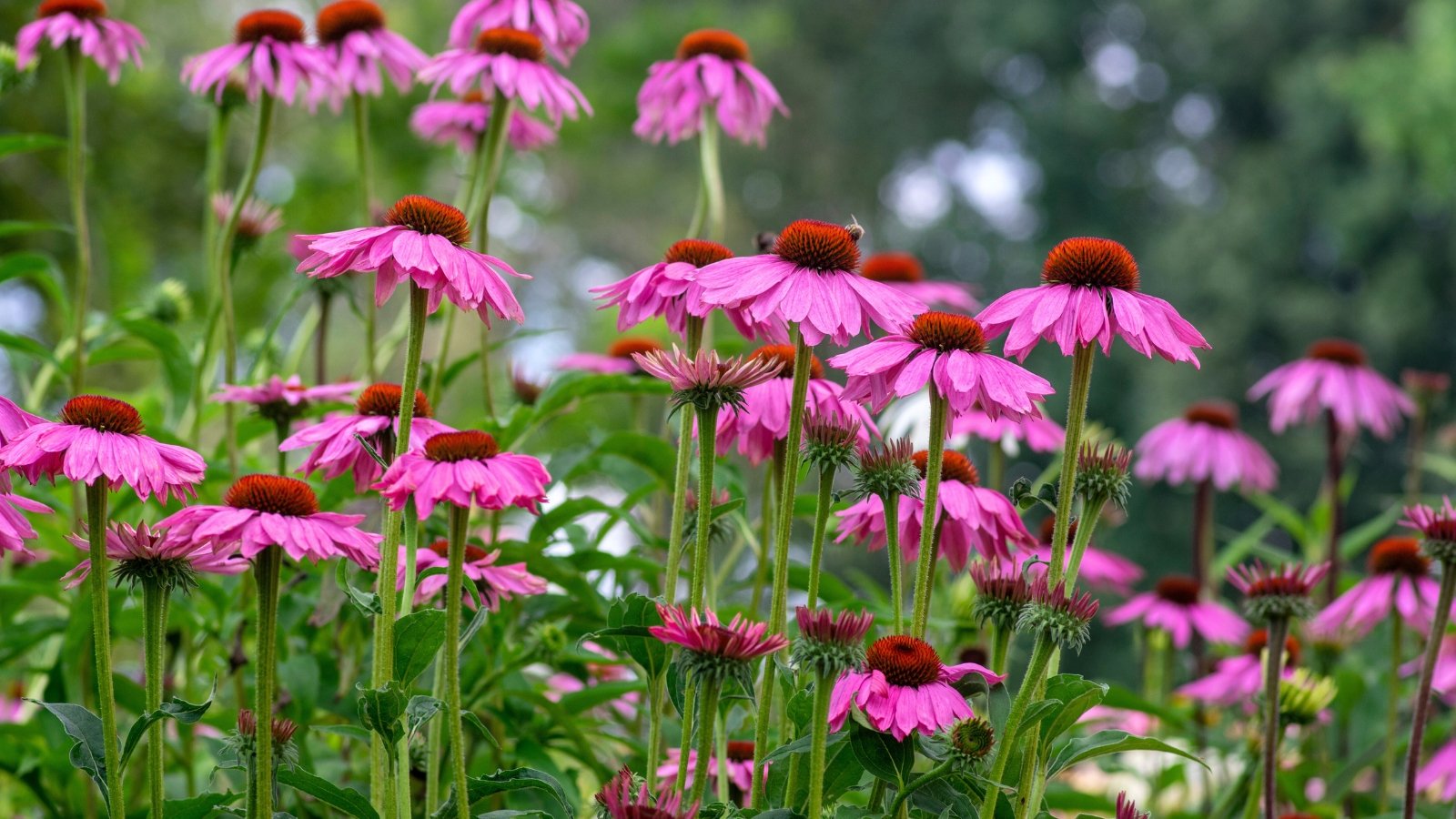 Birds enjoy the seeds long after flowers fade.
Birds enjoy the seeds long after flowers fade.This pairing brings a late summer floral display that has all the best qualities. The color combination of purple and green, with just a tint of rose in the hydrangeas, is graceful and elegant. Coneflowers offer an interesting and prickly texture which contrasts nicely with the hydrangea’s large, soft clusters.
Coneflowers have excellent ecological value. They feed pollinators throughout a long blooming time, and then their seed heads feed birds in fall and winter. They lend a more naturalistic look. Both are content with full sun or partial shade, though both will flower better with full exposure. Conflowers are lovely companions for your ‘Limelight’ hydrangea.

Wild Bergamot
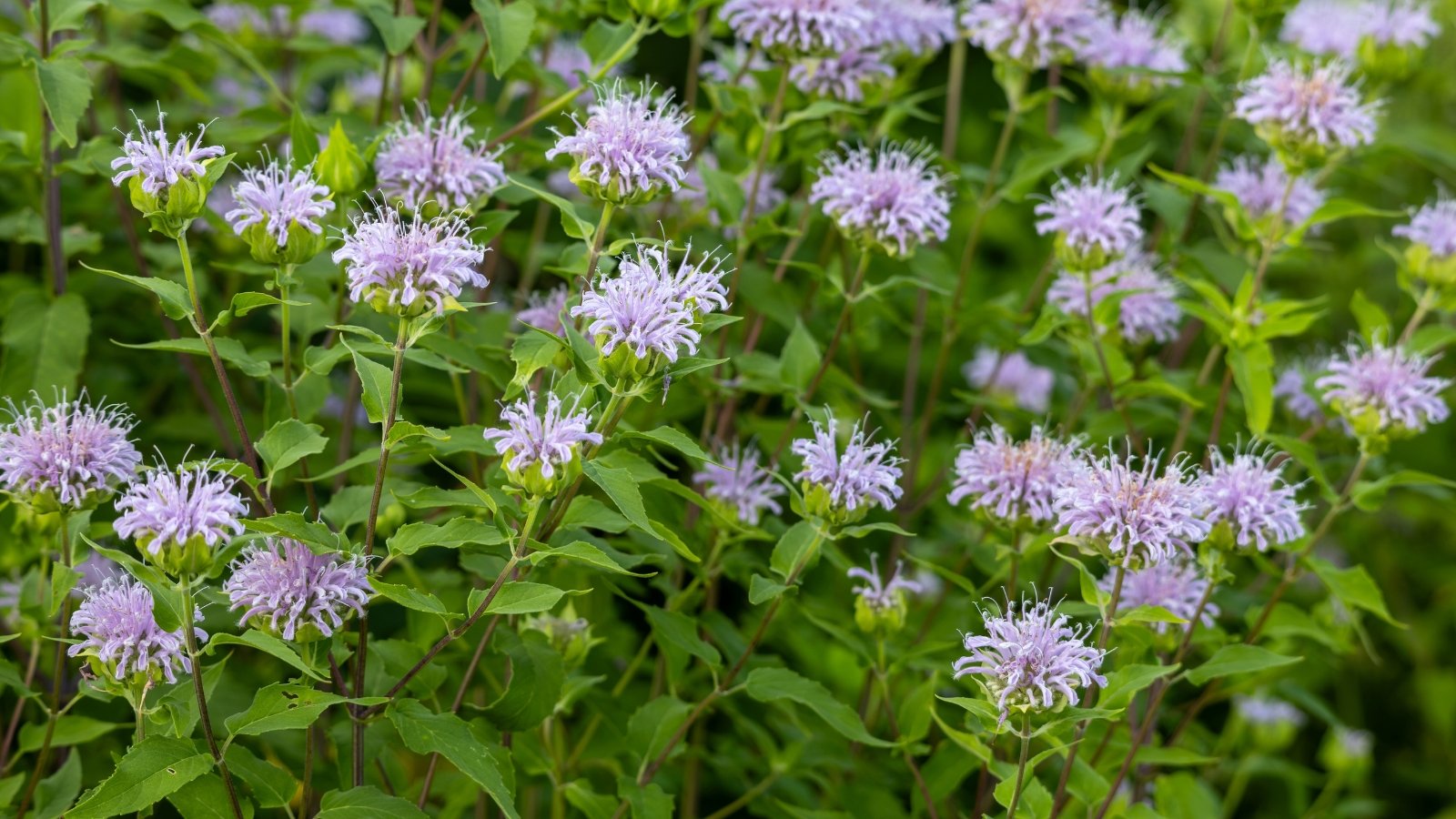 Late summer sun makes the lavender glow warmly.
Late summer sun makes the lavender glow warmly.These ‘Limelight’ hydrangea companions are perfect for the cottage or wildflower garden. Wild bergamot is a wonderful pollinator plant with wiry stems and untamed whorls of lavender flowers. They’re cool and airy, while ‘Limelight’ hydrangeas are dense and lush. They’re perfect for one another.
Limelight has that lovely green color that sets off wild bergamot’s lavender tones in summer. They both begin to fade at the same time, with the rose tones in the hydrangeas echoing the fading purple of the wild bergamot. They’re a wonderful pair.
Hosta
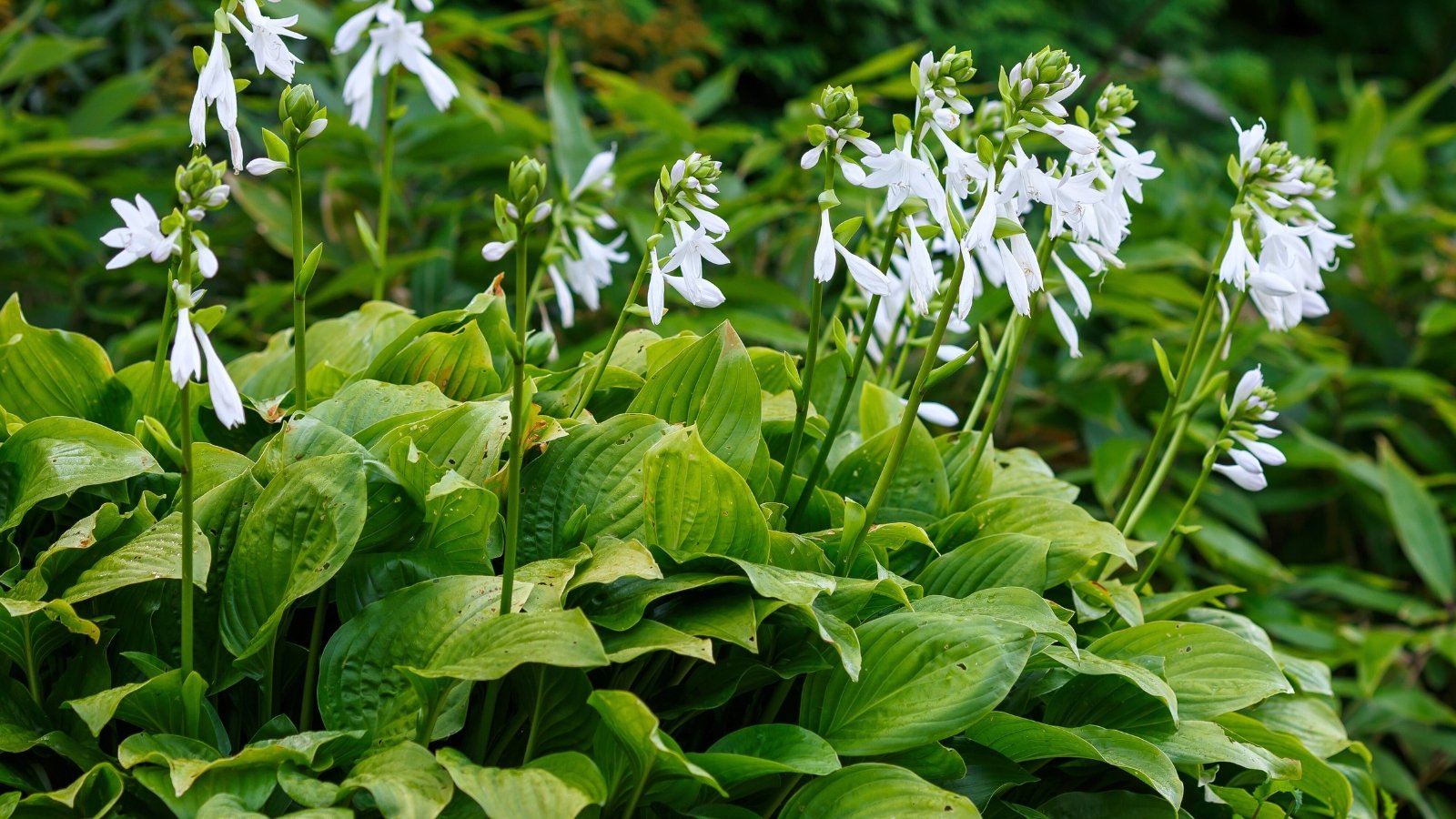 Partial shade encourages broad leaves to grow fully.
Partial shade encourages broad leaves to grow fully.Hostas go wonderfully with hydrangeas if you want to create lush layers and textures. These are great ‘Limelight’ hydrangea companions for a foundational planting, woodland garden, or any space with dappled light. Both plants are happy in partial shade, preferably with sun in the morning.
‘Limelight’ is an upright shrub with large, dramatic flowers. Hostas fill space horizontally, with their large, tropical-looking leaves. Planted around the base, they will buoy your shrub as though floating on a carpet of leaves.
Feather Reed Grass
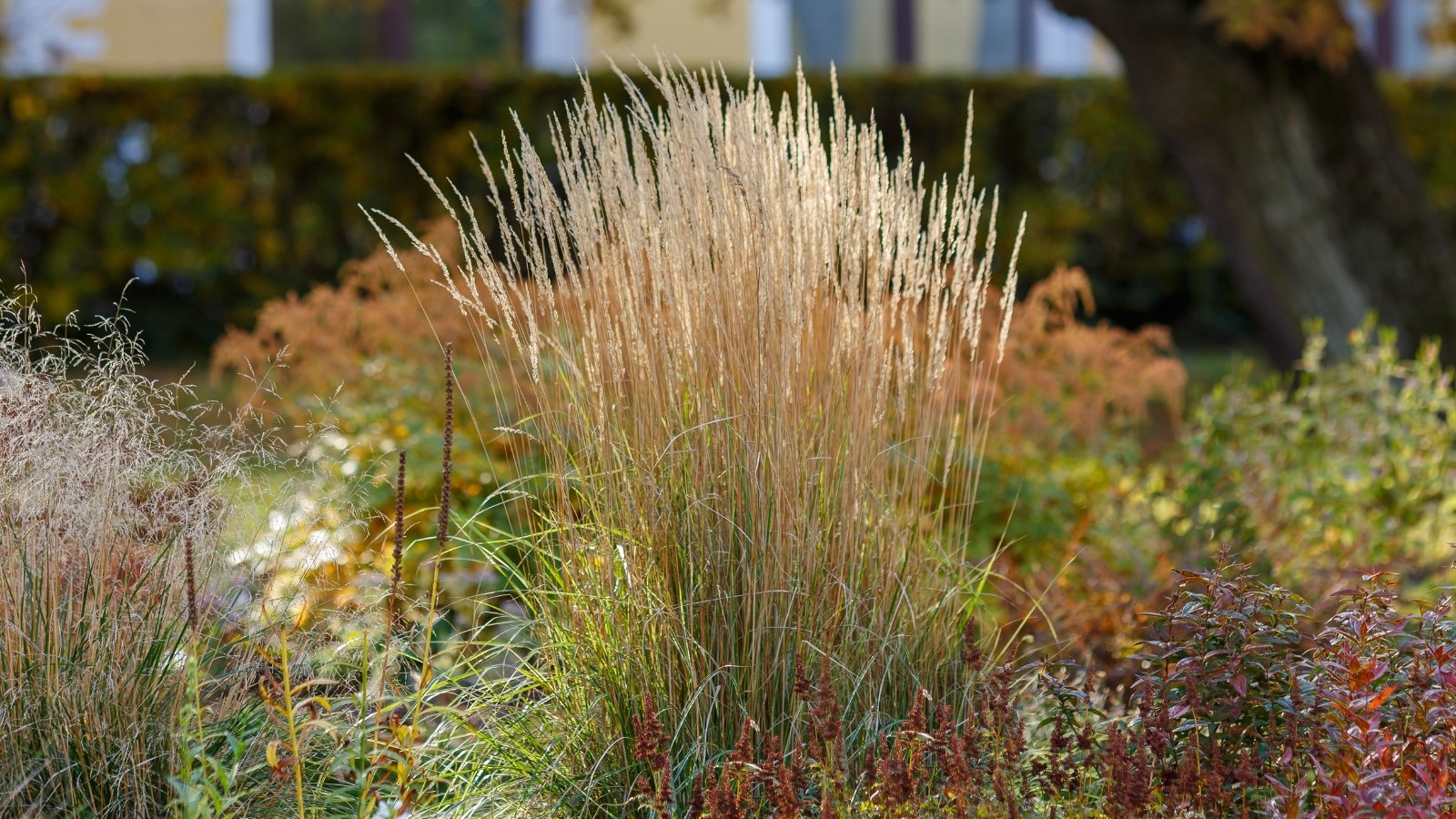 Vertical growth draws the eye up through the space.
Vertical growth draws the eye up through the space.Reed feather grass pairs stunningly with ‘Limelight’ hydrangeas. In fact, this might be the perfect companionship. These two create a gorgeous display throughout the year. Because this hydrangea is ok with more sunlight, it pairs with ornamental grasses that require it.
Reed feather grass has a vertical habit and finely textured foliage with a shimmering quality. It provides a striking contrast to Hydrangea’s soft, rounded form and flowers. Both bloom around the same time, and both hold onto their flowers through fall and into winter.
Salvia
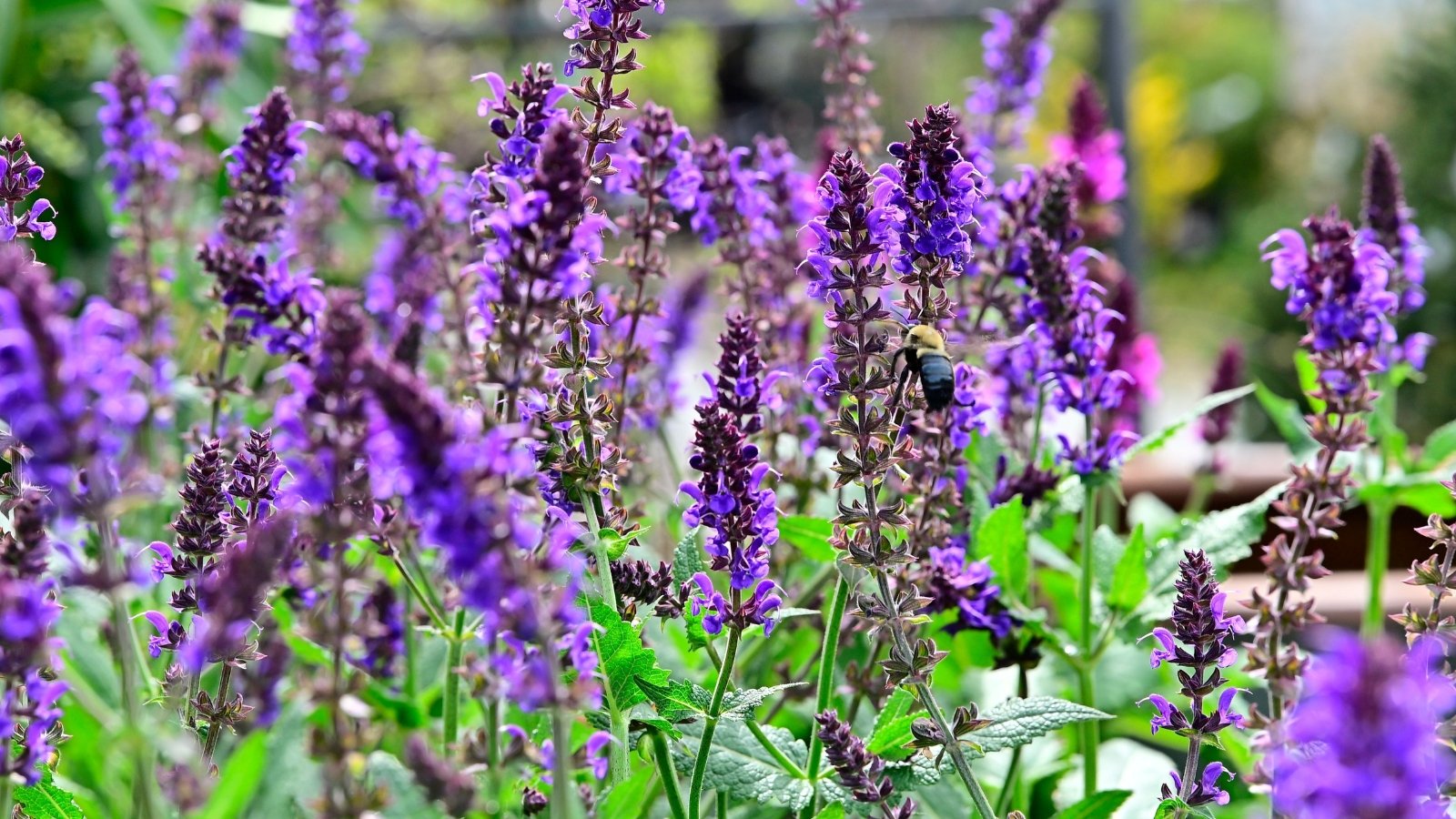 Garden paths look cheerful lined with these tall spikes.
Garden paths look cheerful lined with these tall spikes.Balanced and vibrant, salvia makes an excellent companion for ‘Limelight.’ Both plants are common cottage garden inhabitants. Saliva brings bold drama in the summer with plenty of nectar-rich flowers. It’s great for pollinators. This hydrangea is more subtle, but it has a long bloom time and truly makes a nice neighbor for most plants.
There are different salvia colors that you can choose to play around with color combinations. Blue and purple salvias are a nice bright pop, and red is always eye-catching. Rosy pink cultivars will bring out the pink tones that creep into ‘Limelight’s’ blooms in late summer.
Camellia
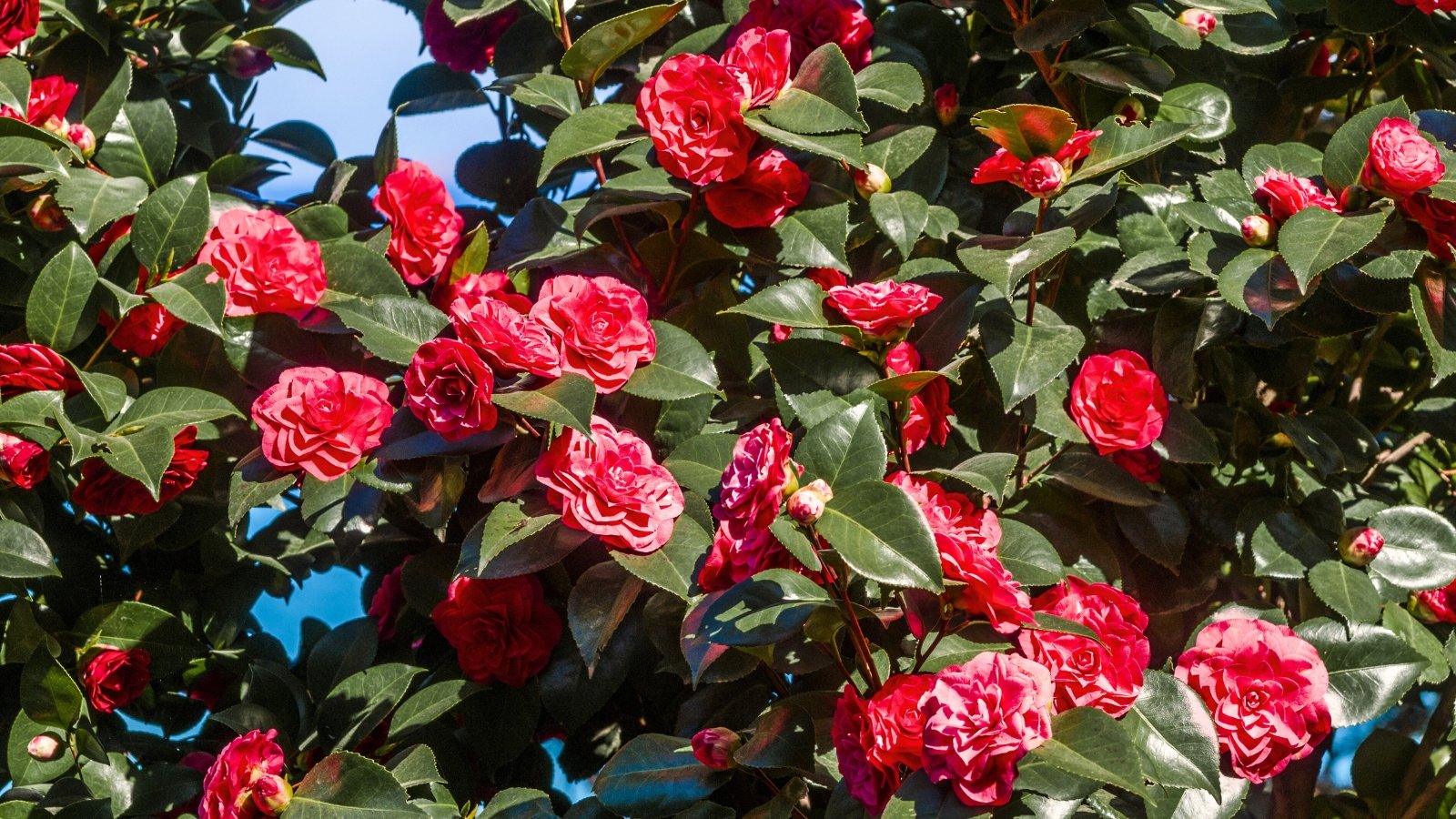 Evergreen structure carries the garden through quiet months.
Evergreen structure carries the garden through quiet months.Choosing a camellia as a companion for your ‘Limelight’ hydrangea is ideal for creating year-round interest. Camellias are evergreen, so they make a great pairing with many deciduous plants. They can carry a lot of the visual load in winter. They are late fall and winter bloomers, so there is no lapse of flowers.
Many camellias bloom for six weeks or longer. Since hydrangeas can hold onto their flowers well into the cooler months, these will overlap nicely. Then, camellia’s glossy foliage holds down the fort until hydrangea leafs out in the spring. Both are spectacular bloomers.


 20 hours ago
1
20 hours ago
1
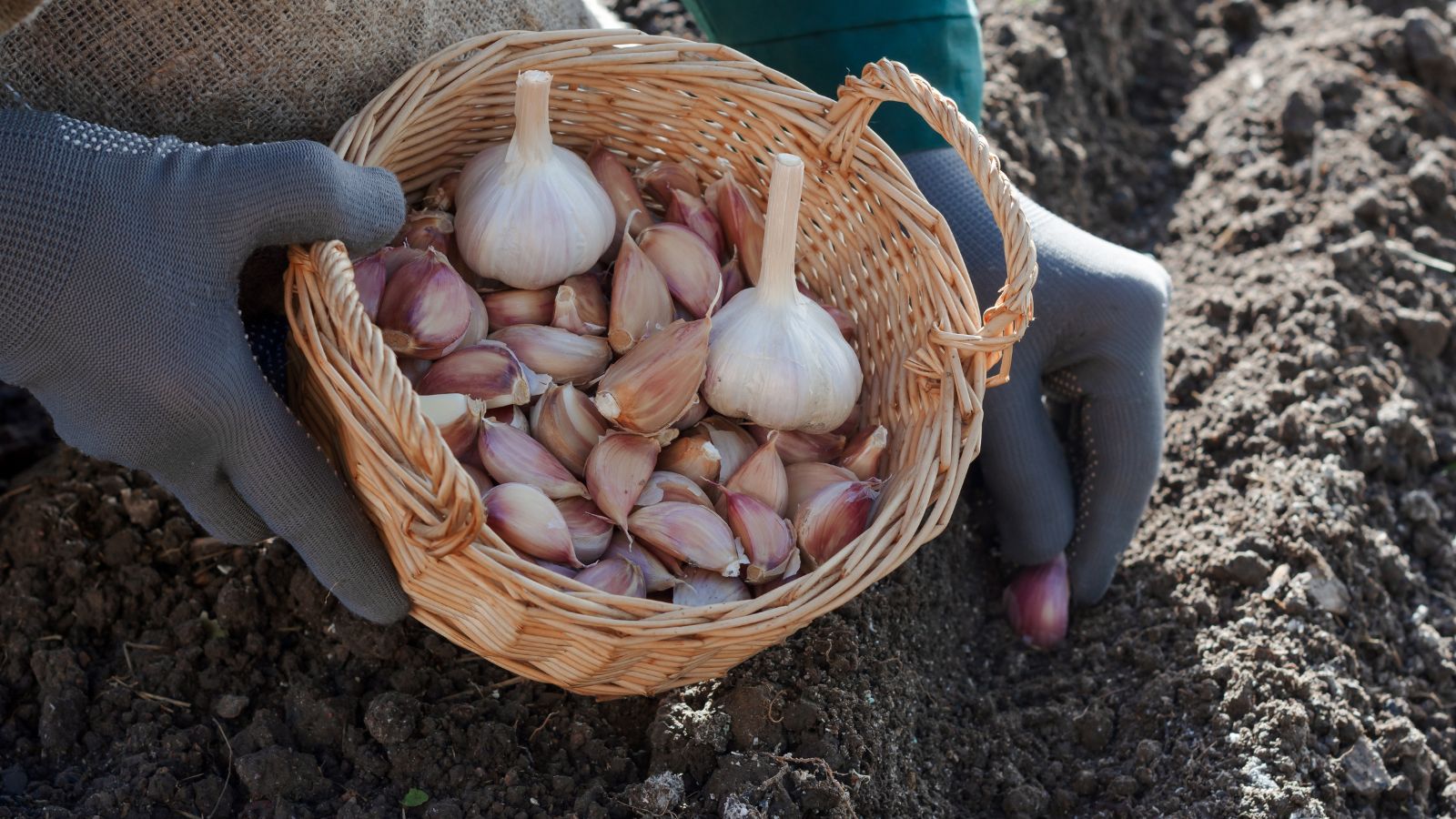

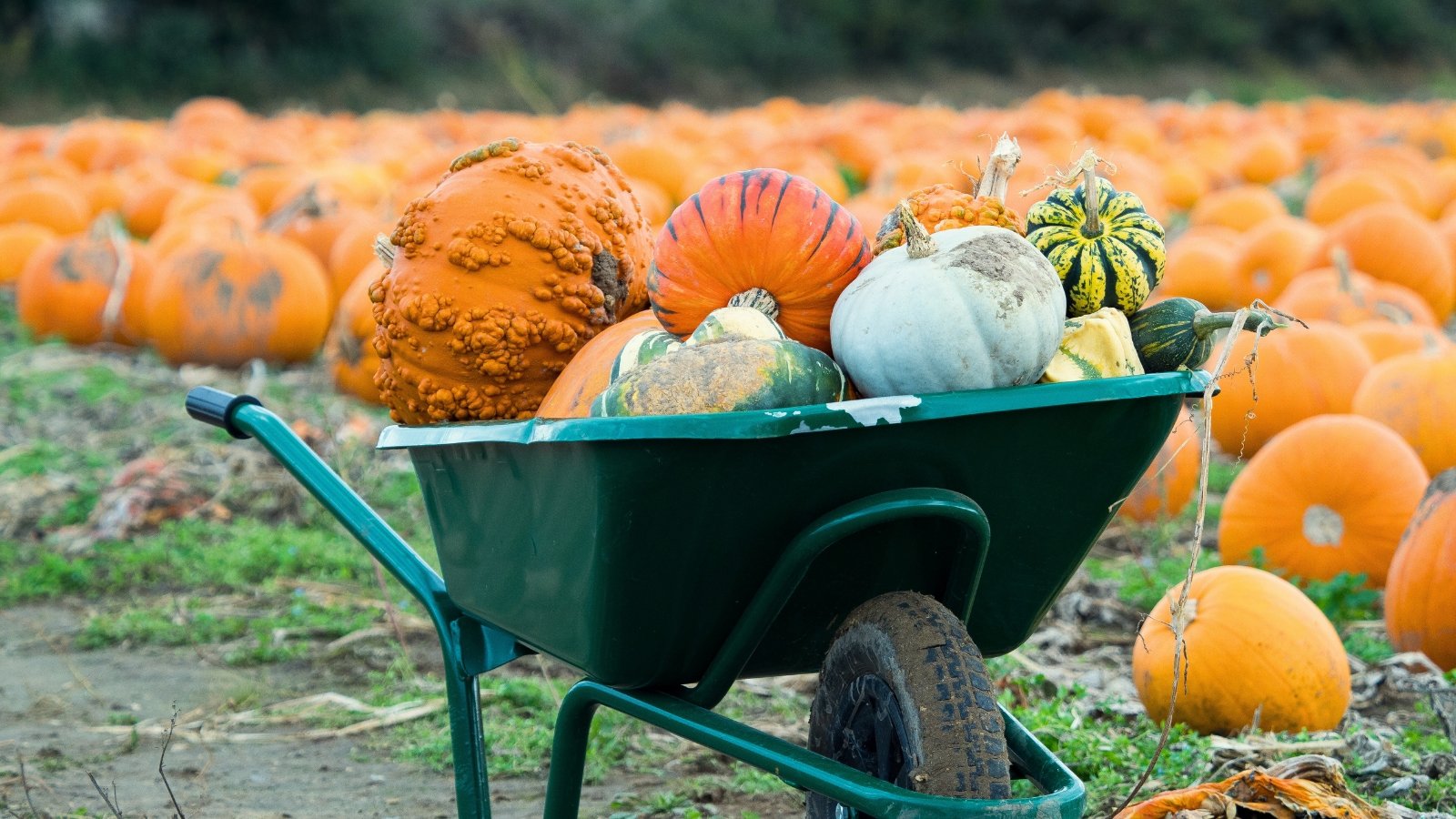


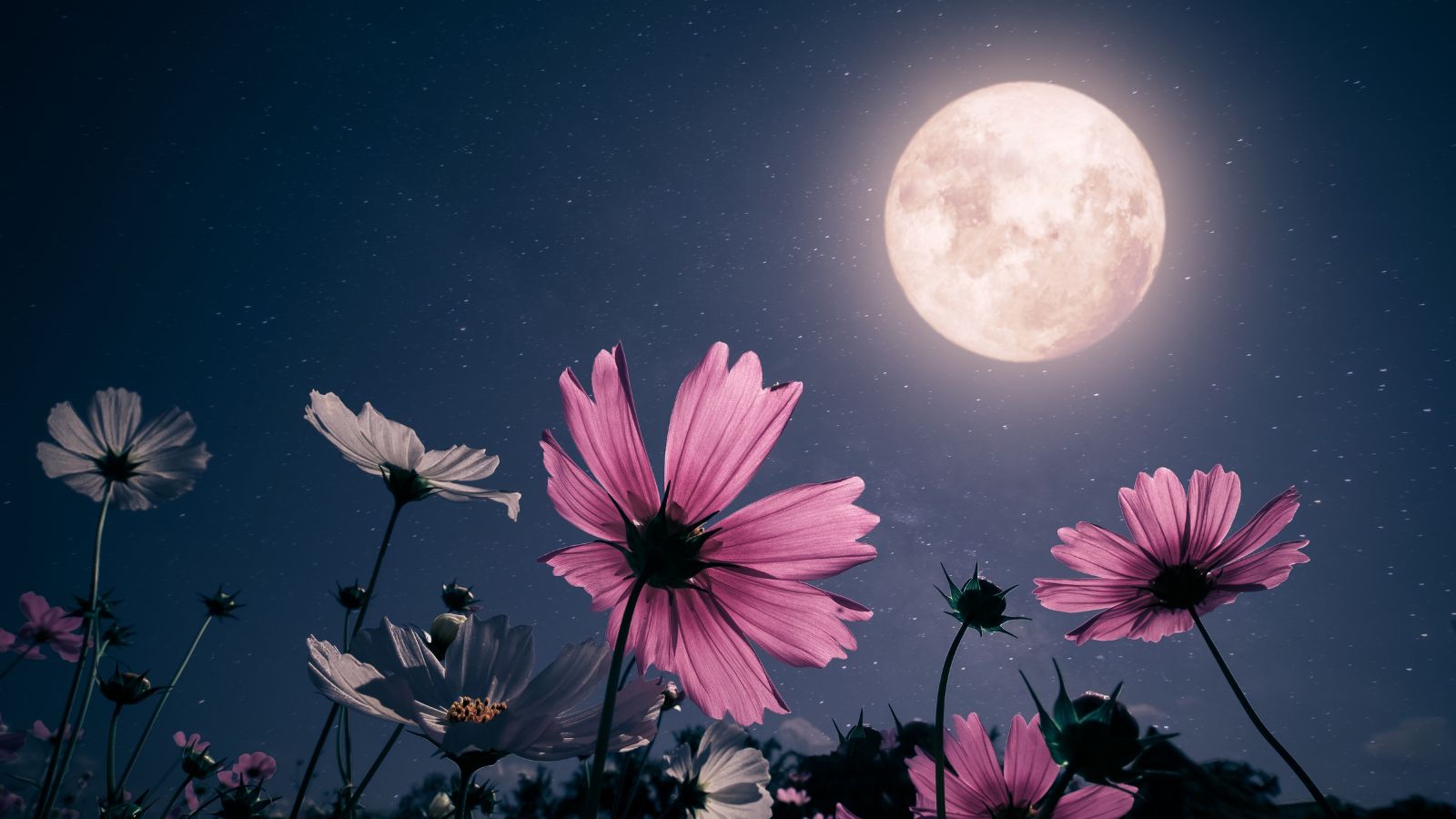















 English (US) ·
English (US) ·  French (CA) ·
French (CA) ·